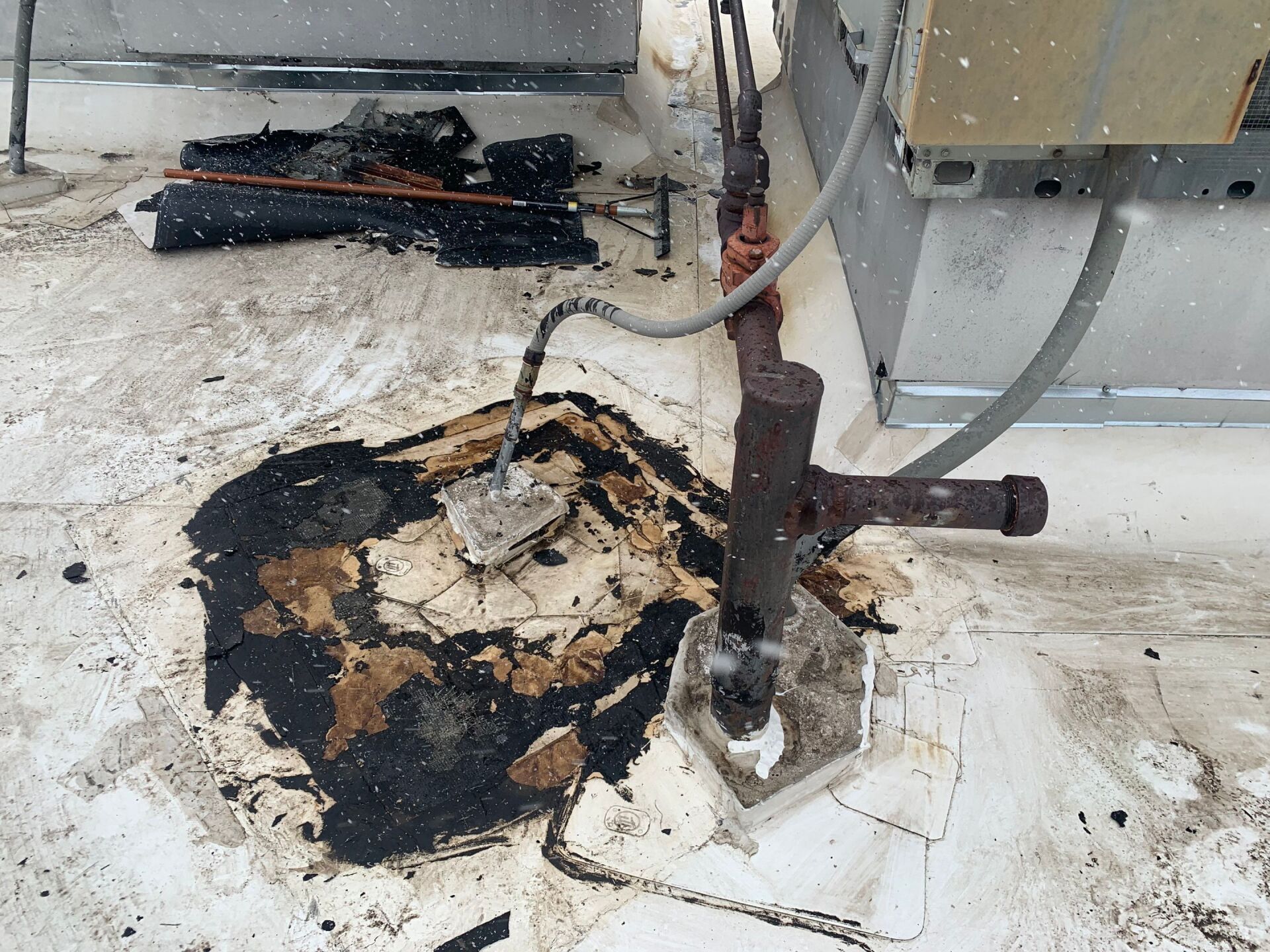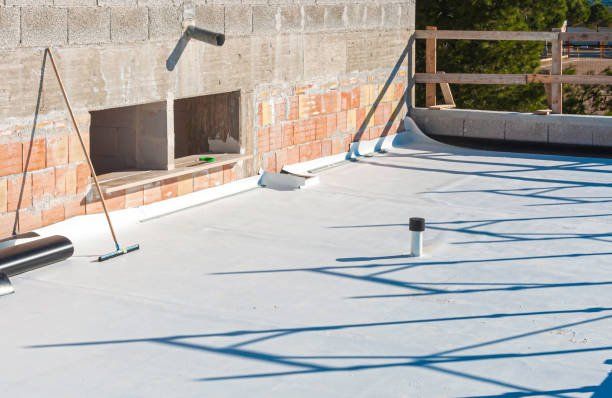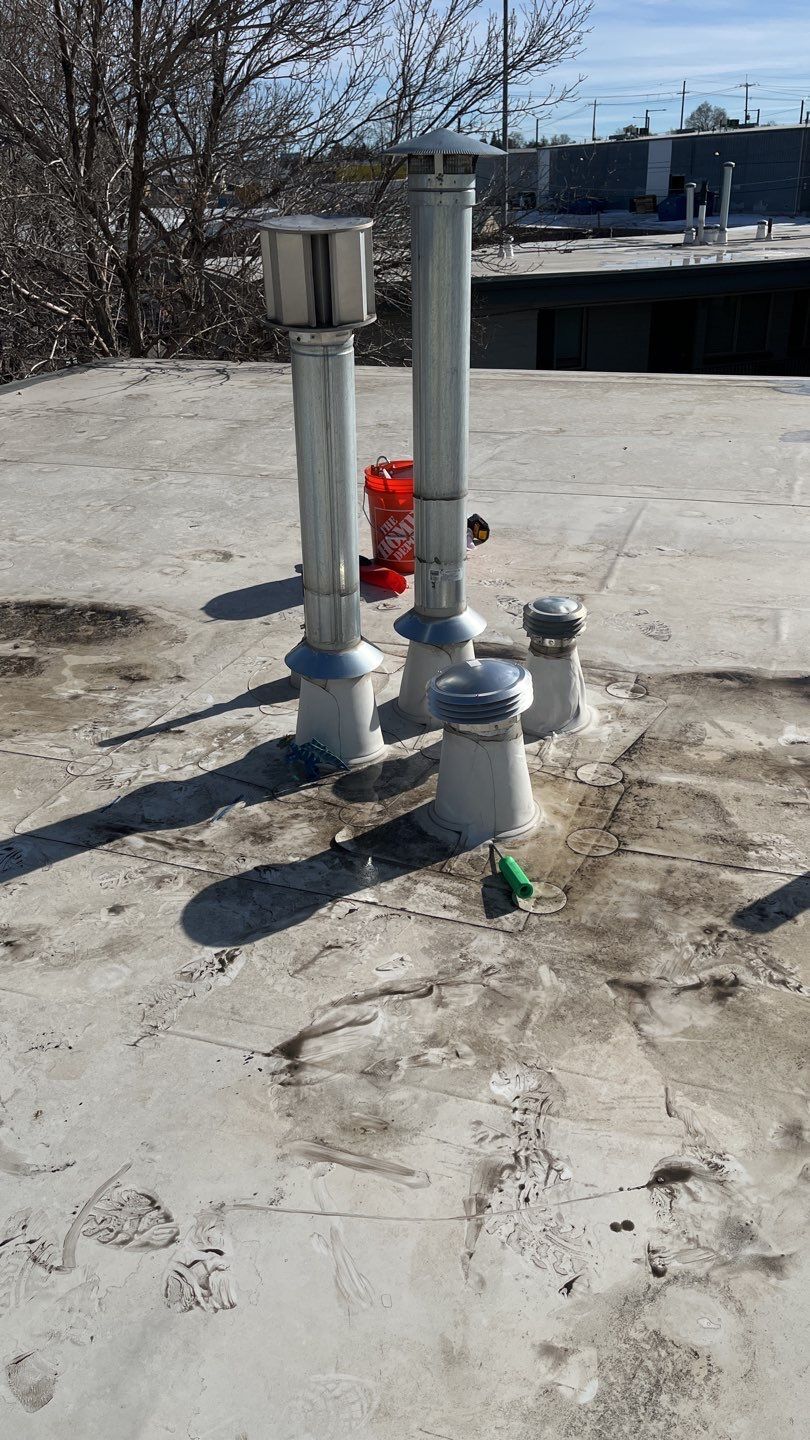By Stephen Scheck
•
December 16, 2021
If you have questions about low-slope roofs, the next few blog topics are for you! Today we will explore EPDM: what exactly it is, the pros and cons of this very popular roofing material, and how to care for and maintain EPDM to get the most life out of it. So let’s start with the basics. What exactly is EPDM? According to the EPDM Roofing Association (ERA) EPDM is “an extremely durable synthetic roofing membrane (ethylene propylene diene terpolymer) which is widely used in low-slope buildings in the United States and worldwide.” Sold in both black and white, EPDM comes in two thicknesses: 45 and 60 mils. This material has been a popular choice for the commercial roofing industry for over 40 years. Installed either fully adhered, or mechanically attached or ballasted, the seams are sealed with liquid adhesives or specially formulated tape. What are the benefits of choosing EPDM as a low slope roofing material? EPDM has several advantages. Not only is it one of the least expensive low slope roofing materials, it has been shown to be the longest performing roofing material of any kind. There are several reasons for this. EPDM is: Fatigue and hail resistant Resistant to ozone, weathering, and ultraviolet radiation Highly resistant to heat and fire Very flexible at low temperatures Highly resistant to wind damage What are the cons of using EPDM? While EPDM is one of the most widely used roofing membrane for low-slope buildings, the material does have its disadvantages: Susceptible to punctures from foot traffic or sharp objects because of the thinness of the material Adhesives used on seams and flashing may be degraded by UV rays Repairs to the seams are often needed, long before the warranty expires The all-black membrane option will absorb ultraviolet light, and may decrease life expectancy by causing shrinkage and brittleness Increased temperature from the absorption of heat may also heat the structure below leading to increased energy costs How do you maintain and repair EPDM? Although there are disadvantages to using EPDM, you can increase the life of your roof with proper care and maintenance. Maintaining the integrity and functionality of your rubber roof membrane involves regular inspections, sweeping off of debris, and cleaning/scrubbing. If an EPDM roofing membrane does become damaged or punctured, repairs are easily made with a few simple steps. First, the area is cleaned with soapy water to remove any sediment. After drying thoroughly, a weathered membrane cleaner is used. Next, EPDM splice primer is applied and allowed to dry. A splice adhesive is administered with a brush, using extra adhesive at any cross seams. Then a patch is placed over the prepared membrane area and a handheld seam roller is used to apply pressure to the patch. Finally, the patch is sealed with lap sealant using a standard caulking gun. Proper care and maintenance of your EPDM roof is necessary, but may be time consuming and does require specialized tools and equipment. With our 3-year, no leak, no dollar limit warranty program, Watershed Roofing and Restoration takes care of all of this by providing: cleaning scrubbing membrane inspections and repairs So, you can rest assured you are taking care of your EPDM roof and increasing its life expectancy and functionality. I hope you gained a better understanding of EPDM roofing membrane! Be sure to check back with us next time as we discuss another low-slope roof material, TPO.







